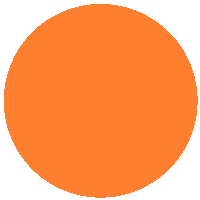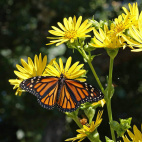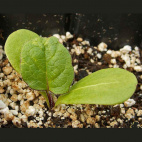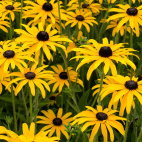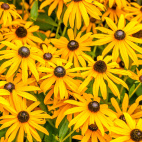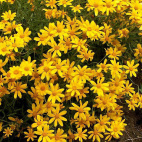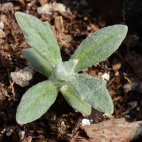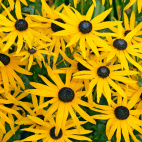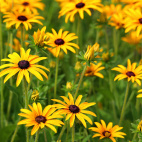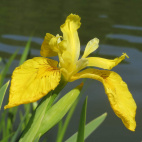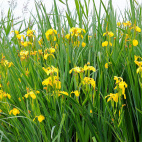Color
Availability
USDA Zone
Region
Type
Duration
Season
Germination
Soil
Sunlight
Height
Use
Narrow Your Search
Color
Availability
USDA Zone
Region
Type
Duration
Season
Germination
Soil
Sunlight
Height
Use
Wildflower Seeds - Northern Region
The Northern region is home to our Canadian friends in the eastern provinces, as well as the northern-most part of the Eastern US. This area is characterized by a long, cold winter with lots of snow, and a short humid summer that only lasts about 3 or 4 months. Most of the area is classified as a UDSA Growing Zone 4 or less, and the species that grow here have interesting ways to perpetuate themselves in spite of the short growing season. There are a lot of forests and wetlands in this region, so adequate moisture is hardly ever a problem. Look up your growing zone to make sure that the Northern wildflower seeds that you want to grow are winter hardy. Alternatively, just order annual flower seeds online so that the plant does not need to make it through the winter, but can reseed itself and come back from seed the next year.
-
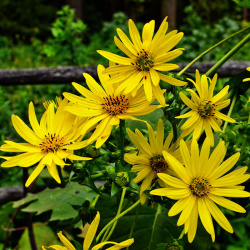 Cup Plant Seeds
Silphium perfoliatum
Cup plant seeds are perfect for attracting butterflies and other pollinators, the cup-like leaves of this native plant store rainwater. This tall perennial is a prevalent species in native seed mixes, especially if it is an area with more moisture.Quick View$3.48 Pkt - $18.77 / Oz
Cup Plant Seeds
Silphium perfoliatum
Cup plant seeds are perfect for attracting butterflies and other pollinators, the cup-like leaves of this native plant store rainwater. This tall perennial is a prevalent species in native seed mixes, especially if it is an area with more moisture.Quick View$3.48 Pkt - $18.77 / Oz -
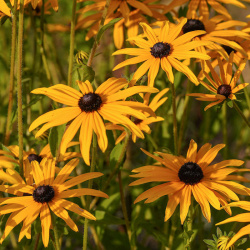 Orange Coneflower Seeds
Rudbeckia fulgida
Orange coneflower is an overlooked gem in its golden profusion. It is like a Black-eyed Susan with a more vibrant golden color and is rather uncommon in the wild. This perennial is easy to grow and blooms late in the season.Quick View$3.75 Pkt - $48.00 / Oz
Orange Coneflower Seeds
Rudbeckia fulgida
Orange coneflower is an overlooked gem in its golden profusion. It is like a Black-eyed Susan with a more vibrant golden color and is rather uncommon in the wild. This perennial is easy to grow and blooms late in the season.Quick View$3.75 Pkt - $48.00 / Oz -
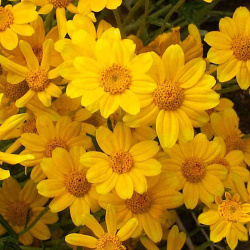 On Sale!
Oregon Sunshine Seeds
Eriophyllum lanatum
Found in the western United States, this bright wildflower truly brings sunshine in its wake. The drought-tolerant plant springs up in dry and rocky locations in the wild but can be naturalized to most garden settings.Quick View$3.48 Pkt - $21.00 / Oz
On Sale!
Oregon Sunshine Seeds
Eriophyllum lanatum
Found in the western United States, this bright wildflower truly brings sunshine in its wake. The drought-tolerant plant springs up in dry and rocky locations in the wild but can be naturalized to most garden settings.Quick View$3.48 Pkt - $21.00 / Oz -
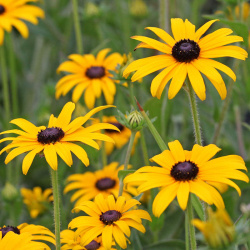 Out Of Stock
Showy Black Eyed Susan Seeds
Rudbeckia fulgida speciosa
This perennial is very similar to Orange Coneflower, with blooms that are more numerous, larger, and more golden than regular Black-eyed Susan. This native wildflower is easy-to-grow and is loved by the pollinators.Quick Viewx
Out Of Stock
Showy Black Eyed Susan Seeds
Rudbeckia fulgida speciosa
This perennial is very similar to Orange Coneflower, with blooms that are more numerous, larger, and more golden than regular Black-eyed Susan. This native wildflower is easy-to-grow and is loved by the pollinators.Quick ViewxShowy Black Eyed Susan Seeds
Rudbeckia fulgida speciosa
This perennial is very similar to Orange Coneflower, with blooms that are more numerous, larger, and more golden than regular Black-eyed Susan. This native wildflower is easy-to-grow and is loved by the pollinators.
$3.48 Pkt - $21.00 / Oz -
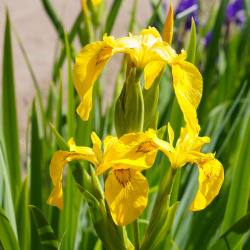 Out Of Stock
Yellow Iris Seeds
Iris pseudacorus
According to legend, the golden fleur-de-lis of France is a stylized version of this yellow iris, which grows wild throughout Europe. The ornamental plant came to North America in the early 20th century and became quite widespread and even invasive.Quick Viewx
Out Of Stock
Yellow Iris Seeds
Iris pseudacorus
According to legend, the golden fleur-de-lis of France is a stylized version of this yellow iris, which grows wild throughout Europe. The ornamental plant came to North America in the early 20th century and became quite widespread and even invasive.Quick ViewxYellow Iris Seeds
Iris pseudacorus
According to legend, the golden fleur-de-lis of France is a stylized version of this yellow iris, which grows wild throughout Europe. The ornamental plant came to North America in the early 20th century and became quite widespread and even invasive.
$3.96 Pkt - $136.00 / Oz
The Northern region is home to our Canadian friends in the eastern provinces, as well as the northern-most part of the Eastern US. This area is characterized by a long, cold winter with lots of snow, and a short humid summer that only lasts about 3 or 4 months. Most of the area is classified as a UDSA Growing Zone 4 or less, and the species that grow here have interesting ways to perpetuate themselves in spite of the short growing season. There are a lot of forests and wetlands in this region, so adequate moisture is hardly ever a problem. Look up your growing zone to make sure that the Northern wildflower seeds that you want to grow are winter hardy. Alternatively, just order annual flower seeds online so that the plant does not need to make it through the winter, but can reseed itself and come back from seed the next year.


